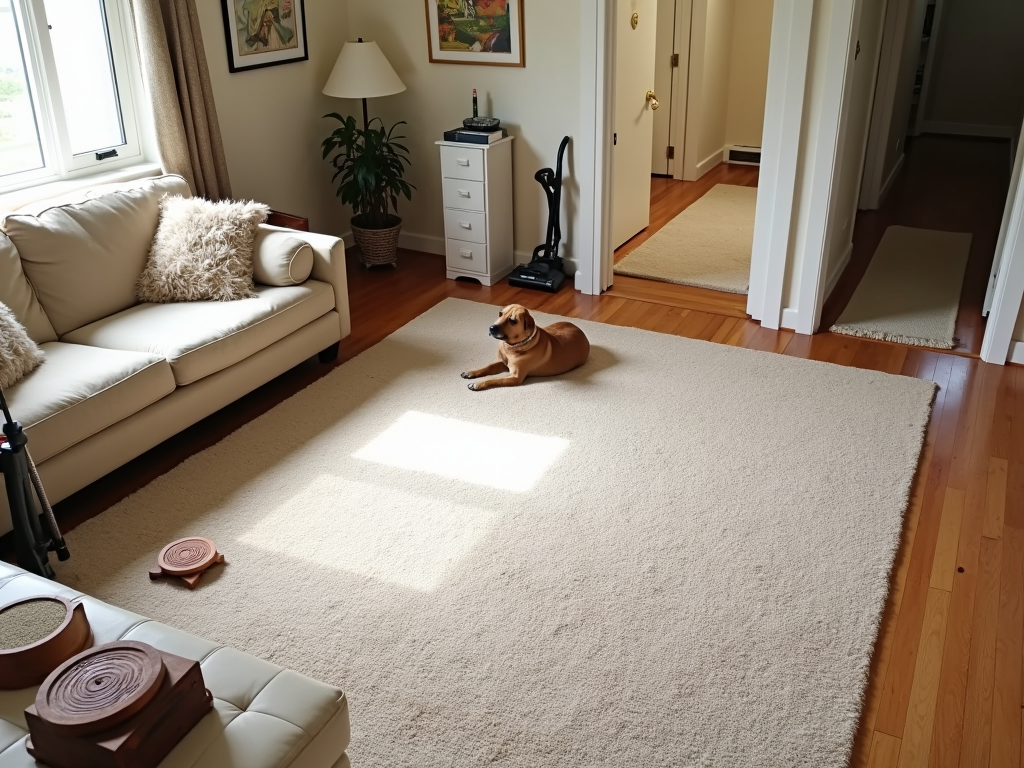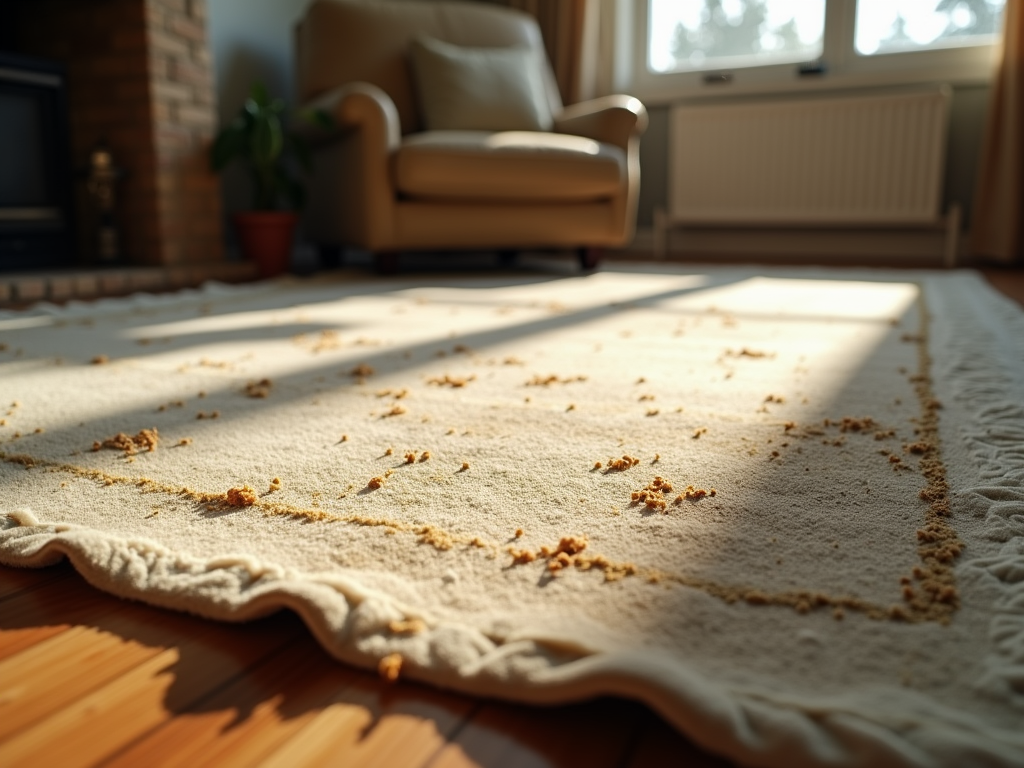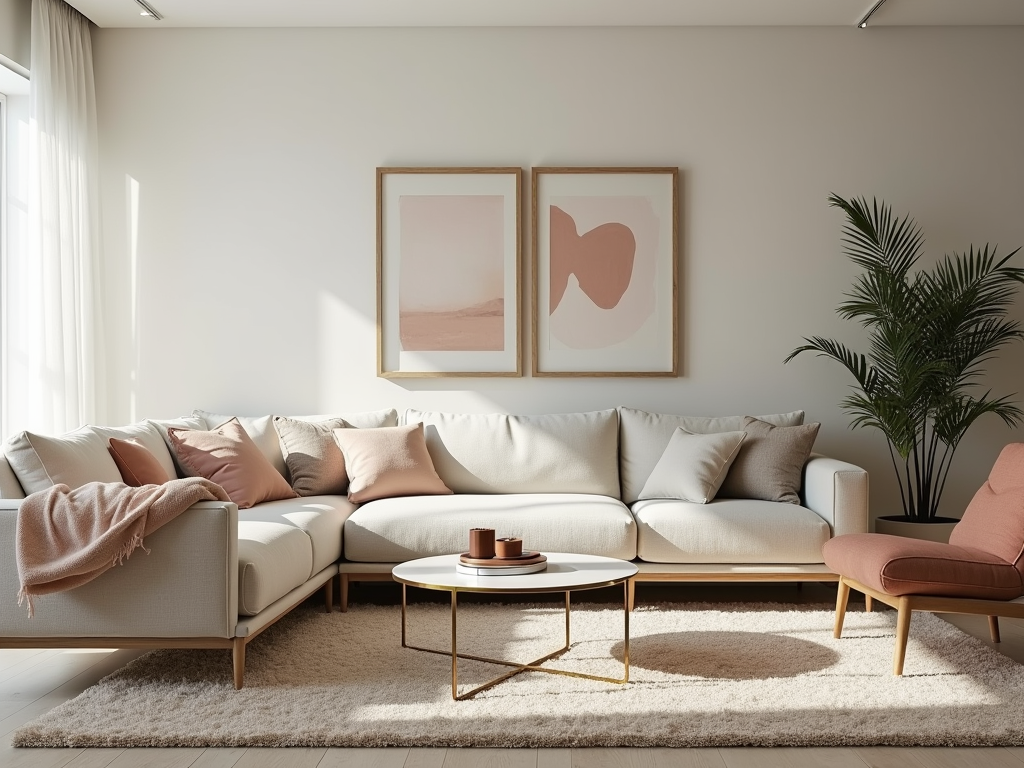
Replacing area rugs is a decision influenced by factors like foot traffic, upkeep routines, and whether issues like stains, odors, or wear have taken their toll. While many rugs hold up for around a decade, those in busier spaces or receiving less care may need replacing much sooner.
Key Insights
- Most rugs last about 10 years, but heavy use or improper maintenance can shorten their lifespan.
- Consistent care—such as vacuuming, occasional rotation, and prompt spot cleaning—adds years to a rug’s durability.
- Signs like persistent stains, unpleasant odors, damaged edges, or uneven surfaces signal it’s time for a new rug.
- Rugs in less-used areas, such as guest rooms, usually outlast those in high-traffic zones like living rooms or hallways.
- Swapping out old rugs can not only update your décor but also eliminate hidden risks like allergens, mold buildup, or tripping hazards.
Tips for Extending a Rug’s Life
Extending a rug’s life starts with proper cleaning habits. Vacuum regularly to prevent dirt from settling into fibers. Flip or rotate them periodically for even wear, especially in areas with constant traffic. Promptly handle spills to avoid permanent stains. If you’re storing seasonal rugs, always clean them thoroughly first to prevent pests or odors.
Choosing Materials for High-Traffic Areas
For high-traffic areas, consider investing in rugs made from materials like wool or synthetic blends, as these tend to wear better over time. Durable backing and tightly woven fibers also resist breakdown more effectively. Even the best rugs, however, eventually begin to show their age. Recognizing when to let go is just as important as maintaining a rug’s condition.
Health and Safety Benefits of Replacing Old Rugs
Don’t overlook the health and safety advantages of replacing an older rug. Over the years, rugs absorb allergens, bacteria, and moisture, which may lead to respiratory or mold concerns. Additionally, edges that have started to fray or warp can quickly become tripping hazards. Upgrading to a new rug guarantees not only a fresh look but also greater peace of mind.
Why the Lifespan of Your Area Rug Matters
Most area rugs last around 10 years, but that number isn’t set in stone. A rug’s durability depends on things like how much foot traffic it endures and how well it’s maintained. Rugs in busy spots—like living rooms or hallways—wear out faster due to constant use. If you’ve got pets or kids, you know spills, fur, and claws can also shorten its longevity.
Regular maintenance plays a big role in keeping your rug around longer. Frequent vacuuming, spot cleaning spills right away, and having it professionally cleaned every year or two can do wonders for its lifespan. I recommend rotating your rug every six months, especially in high-traffic areas, to even out the wear.
If you’ve placed a rug in a less-used space, like under a dining table or in a guest room, it’s likely to last longer. On the other hand, rugs in entryways or under chairs you frequently pull out might show signs of age within a few years.
Keeping up with care doesn’t just preserve the rug—it also protects your investment. A well-loved rug can handle life’s daily messes, but the better maintained it is, the longer you can hold on to it without having to buy a replacement.

Key Indicators That Your Area Rug Needs Replacing
Some rugs are past saving, no matter how much effort you put into maintaining them. Keep an eye out for these signs to know when it’s time to let go.
Stains and Odors
Noticeable stains that won’t budge, even after professional cleaning, are a clear clue. Whether it’s wine, pet accidents, or years of use, some stains penetrate deep enough to permanently alter the look and hygiene of the rug. Similarly, lingering odors like mold, mildew, or pet smells can signal damage beneath the surface. These odors often mean the fibers or even the base of the rug have been compromised.
Physical Deterioration
Next, inspect for physical deterioration. Fading colors or matted fibers, especially in high-traffic areas, make a rug look tired and lifeless. Loose bindings or frayed edges worsen over time and may not be repairable. If your rug is buckling, curling at the edges, or forming wrinkles, this can create a tripping hazard. A rug should lay completely flat—anything less is a safety risk and sign of replacement need.
Age and Style
Age matters, too. A rug older than 10 years will have likely seen its best days—even durable ones eventually wear out. Trends change, and an outdated pattern or improper size for your space may no longer work with modern decor. If a rug doesn’t complement your style or doesn’t fit correctly in your room, it’s worth considering an upgrade.
Keep these factors in mind before clinging to a rug that’s past its prime. It’s easier to replace than regret.

Simple Habits That Extend the Life of Your Rug
Taking care of your rug doesn’t have to feel overwhelming. A few easy habits can keep it looking fresh for years to come.
First, adopting a no-shoe rule in your home is a simple way to prevent dirt and debris from building up on your rugs. Even small particles from shoes can grind into the fibers and cause premature wear. Offering guests comfy slippers might help make the transition smoother.
Make it a habit to shake your rugs outside every couple of weeks. This loosens and removes dust and debris that daily traffic tends to push deep into the fabric. Follow this up with vacuuming to ensure you get rid of allergens and fine particles that shaking can’t catch. For high-traffic areas, vacuum at least once or twice a week to stay ahead of grime.
Spills happen, but acting quickly can make all the difference. Blot (don’t rub!) the stain immediately and use a cleaning solution that’s safe for your rug’s material. The faster you act, the more likely you’ll avoid permanent discoloration and damage.
Wrapping up your care routine, consider scheduling a professional deep cleaning once a year. This removes embedded debris and allergens that even the best home cleaning can miss. It’s like hitting the reset button on your rug. Remember, a bit of regular care goes a long way in protecting your investment!

The Hidden Health and Safety Risks of Worn-Out Rugs
Old rugs can quietly bring unexpected problems into your home. One major concern is health. Over time, rugs often trap allergens like dust, pet dander, and pollen. These particles settle deep into the fibers and are tough to remove even with regular vacuuming. If anyone in your home has allergies or asthma, a rug that’s past its prime could worsen their symptoms without you realizing. And don’t underestimate the dangers of moisture. Rugs in humid spaces can harbor mold or mildew, which releases spores into the air and harms indoor air quality.
But it’s not just health concerns that should grab your attention—there’s safety to think about too. Worn-out rugs often wrinkle or develop curled edges. These tricky bumps create unnecessary tripping hazards, especially in high-traffic areas. This risk becomes even more serious in homes with small children, older adults, or anyone with mobility challenges.
Here’s how you can decide if it’s time to replace or repair your rug:
- Noticeable Allergies or Smells: If allergy symptoms ramp up or there’s an unpleasant odor, it’s likely your rug is no longer as clean or safe as it should be.
- Mold or Mildew Growth: Even a small patch of mold is enough reason to retire a rug.
- Visible Wear and Structural Damage: Look for wrinkling, curling, or thinning spots that could cause accidents.
Pay attention to these hints. Your rug does more than cover the floor—it impacts your health and safety too.

When Aesthetics Play a Role in Replacing Rugs
Sometimes a rug might be in perfect condition but doesn’t fit your updated room design or personal style. A mismatch like that can throw off the entire vibe of a space. If a rug no longer aligns with your aesthetic satisfaction or fails to ‘spark joy,’ it’s worth considering a replacement.
Refreshing your space with a new rug can highlight a recent style upgrade or tie together a new furniture layout. Look for colors, patterns, or textures that enhance the room’s harmony. Whether you’re going for a minimalist feel or a cozy, layered look, the right rug does wonders for creating cohesion.
Think of it as an opportunity to express your taste. A thoughtfully chosen rug can make an otherwise ordinary room feel balanced and complete. It’s all about finding the piece that fits your vision.

Sources:
The Carpet Workroom – “When to Replace Your Old Area Rug”
Sisal Rugs – “How Often Should You Replace Your Rug? 8 Signs It’s Time”
RugCare – “Replacing Your Carpet: 4 Signs”
Carpet One – “Carpet Replacement Guide”
